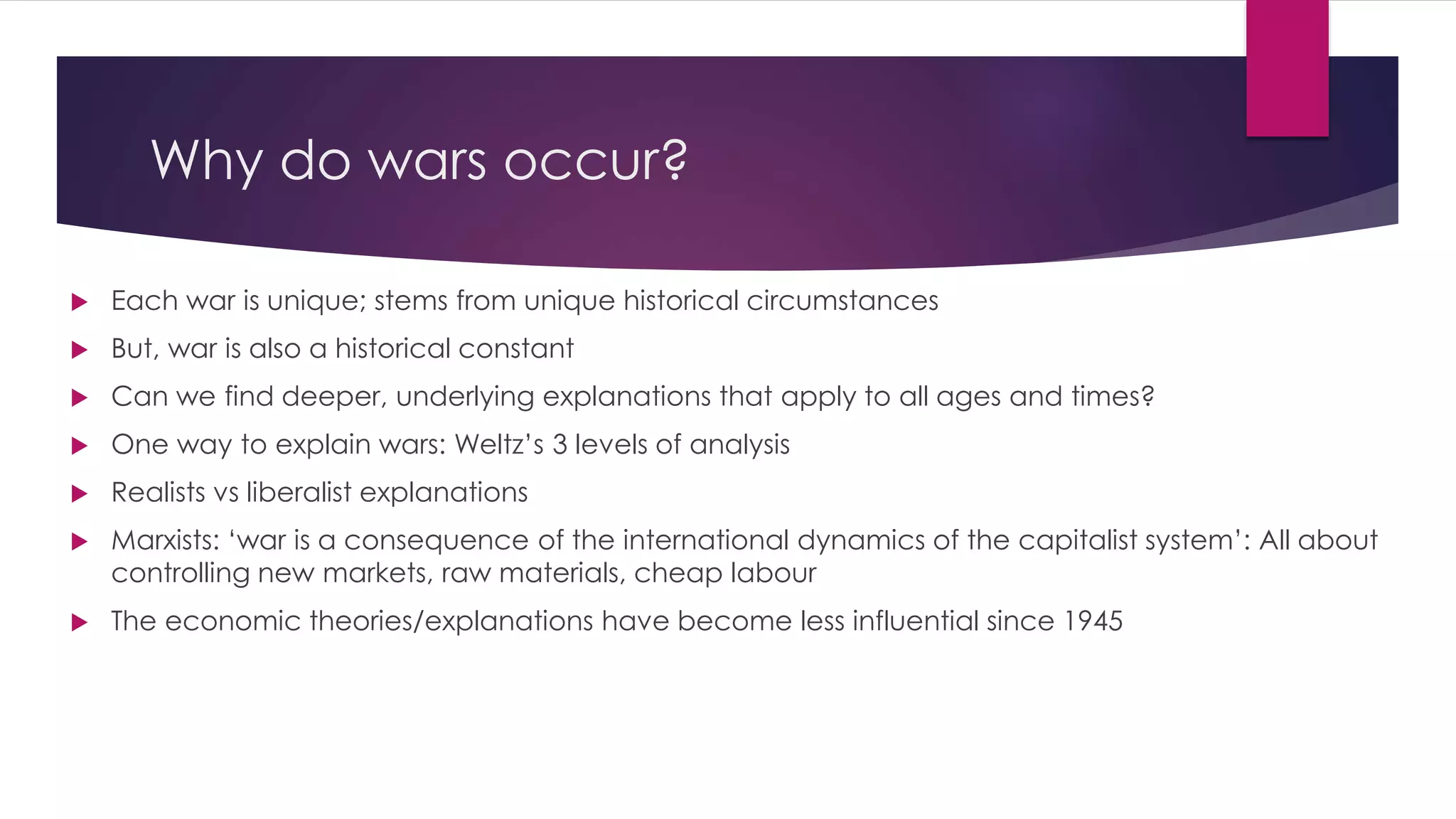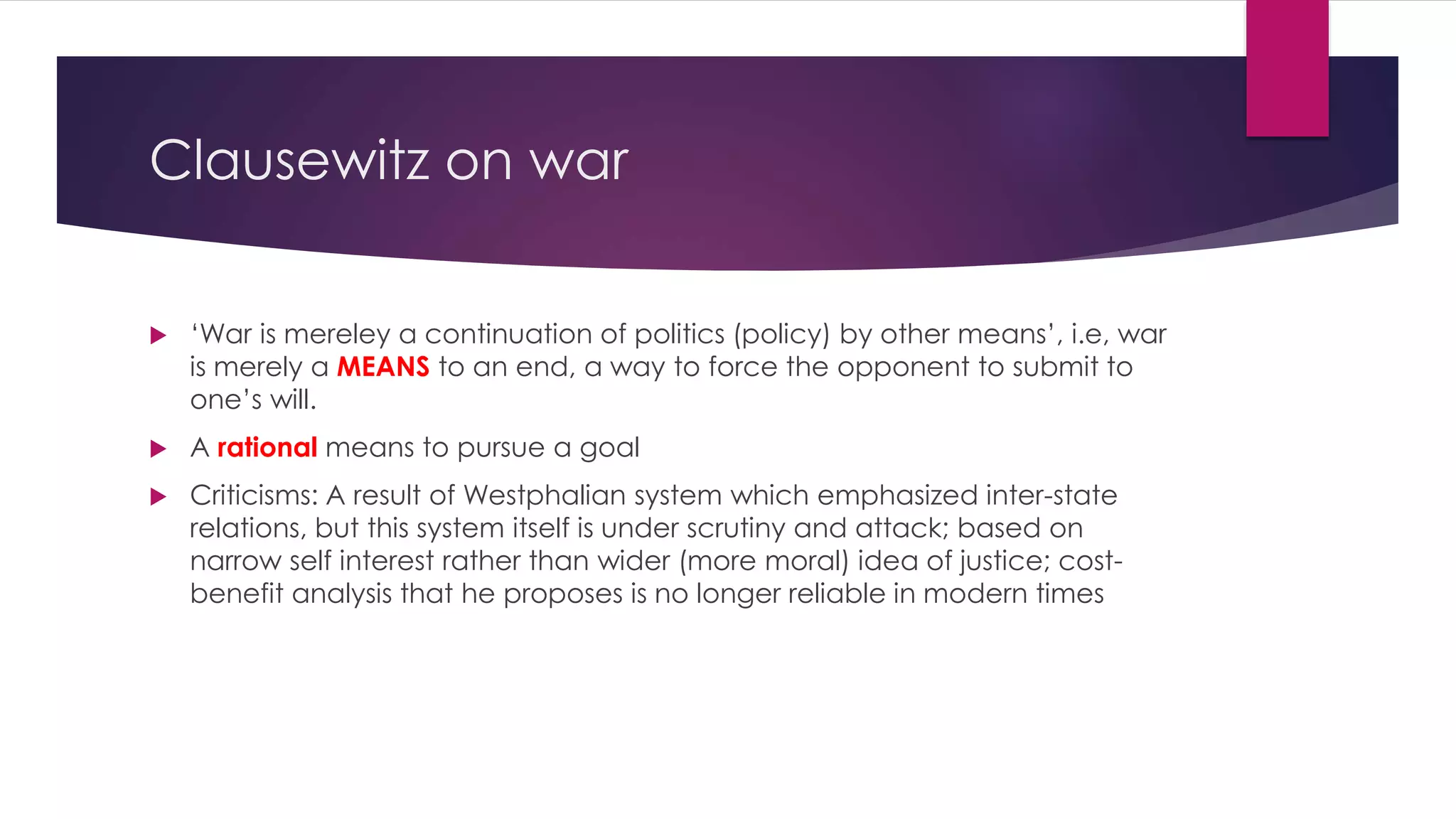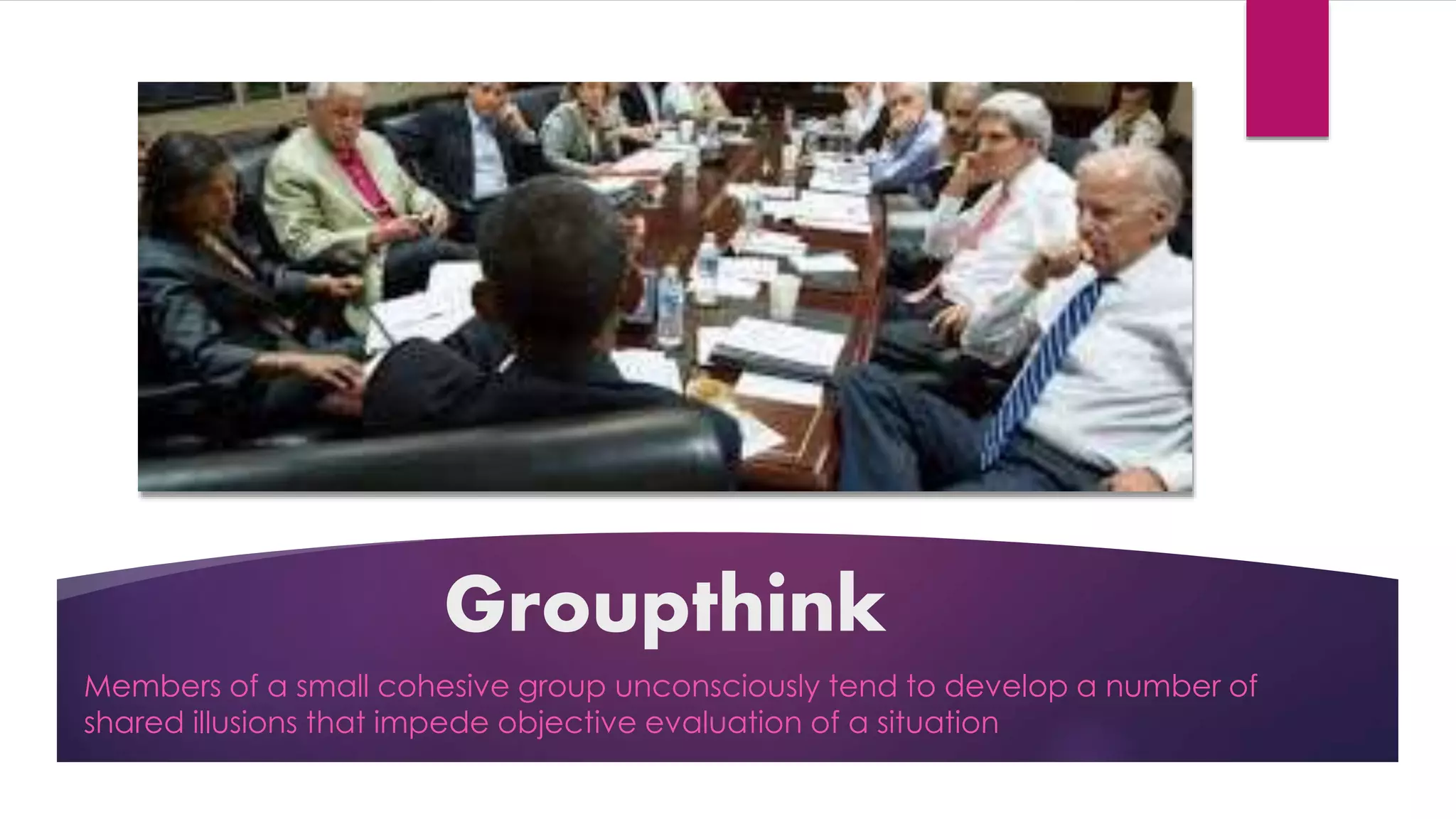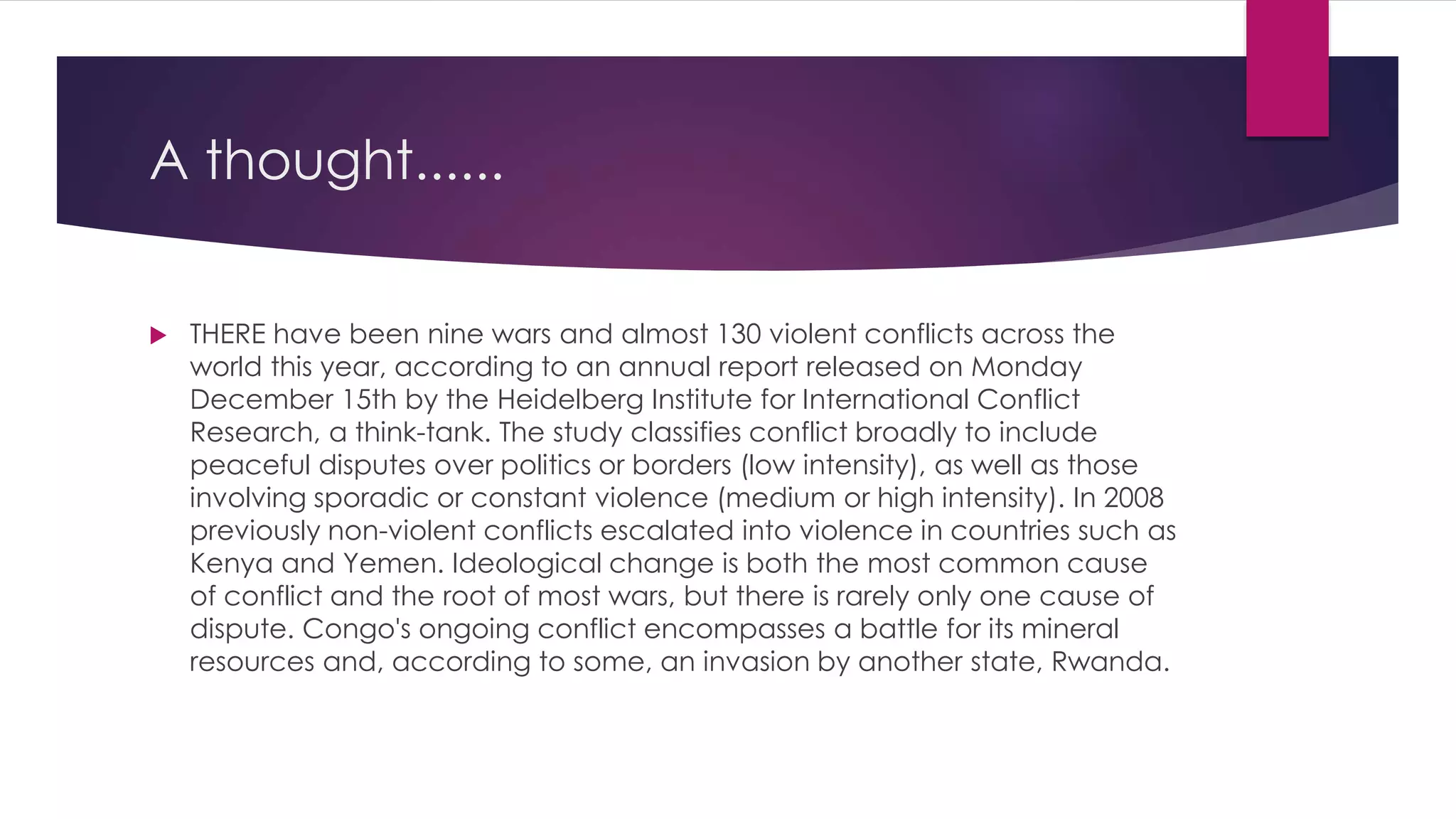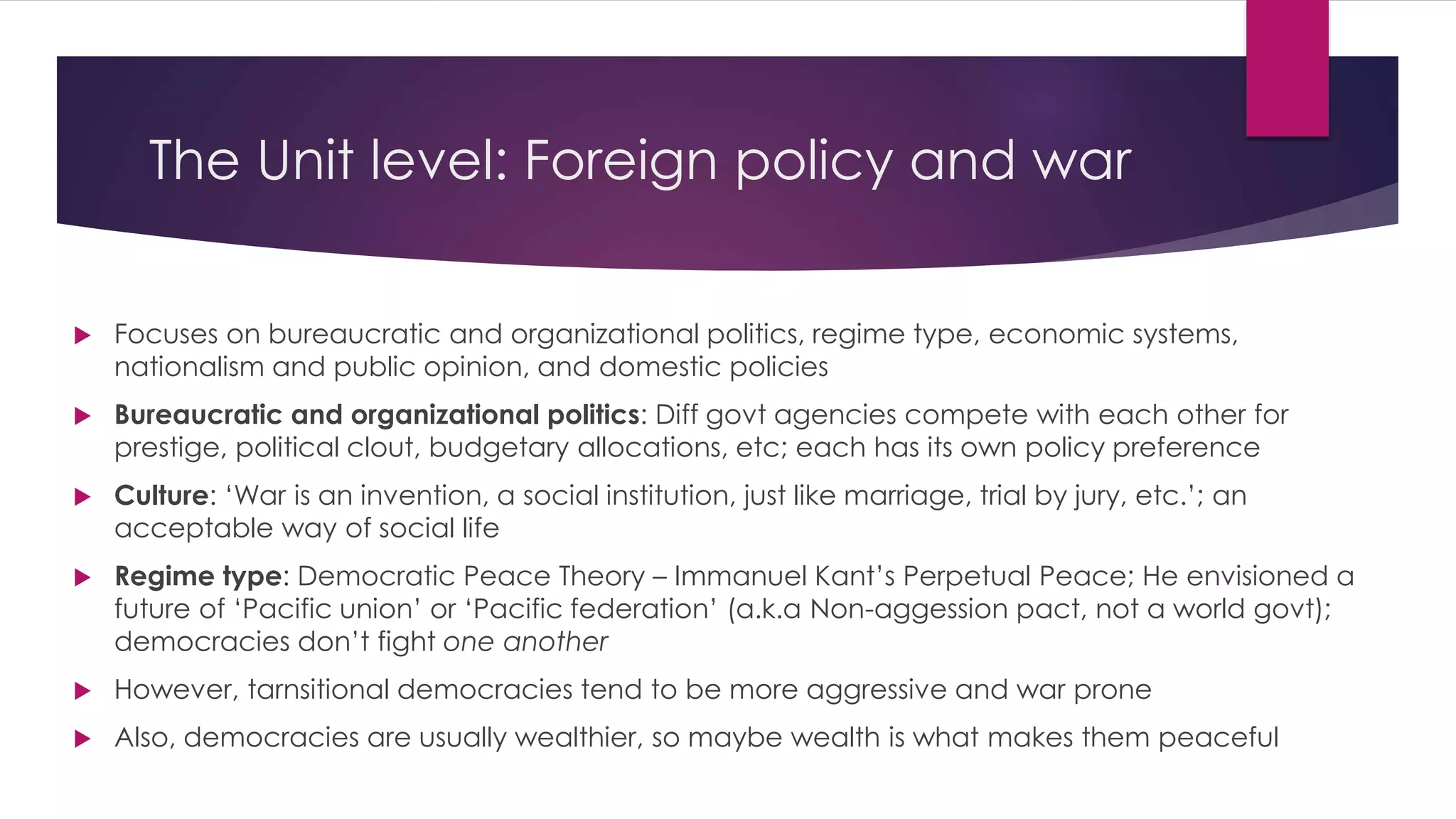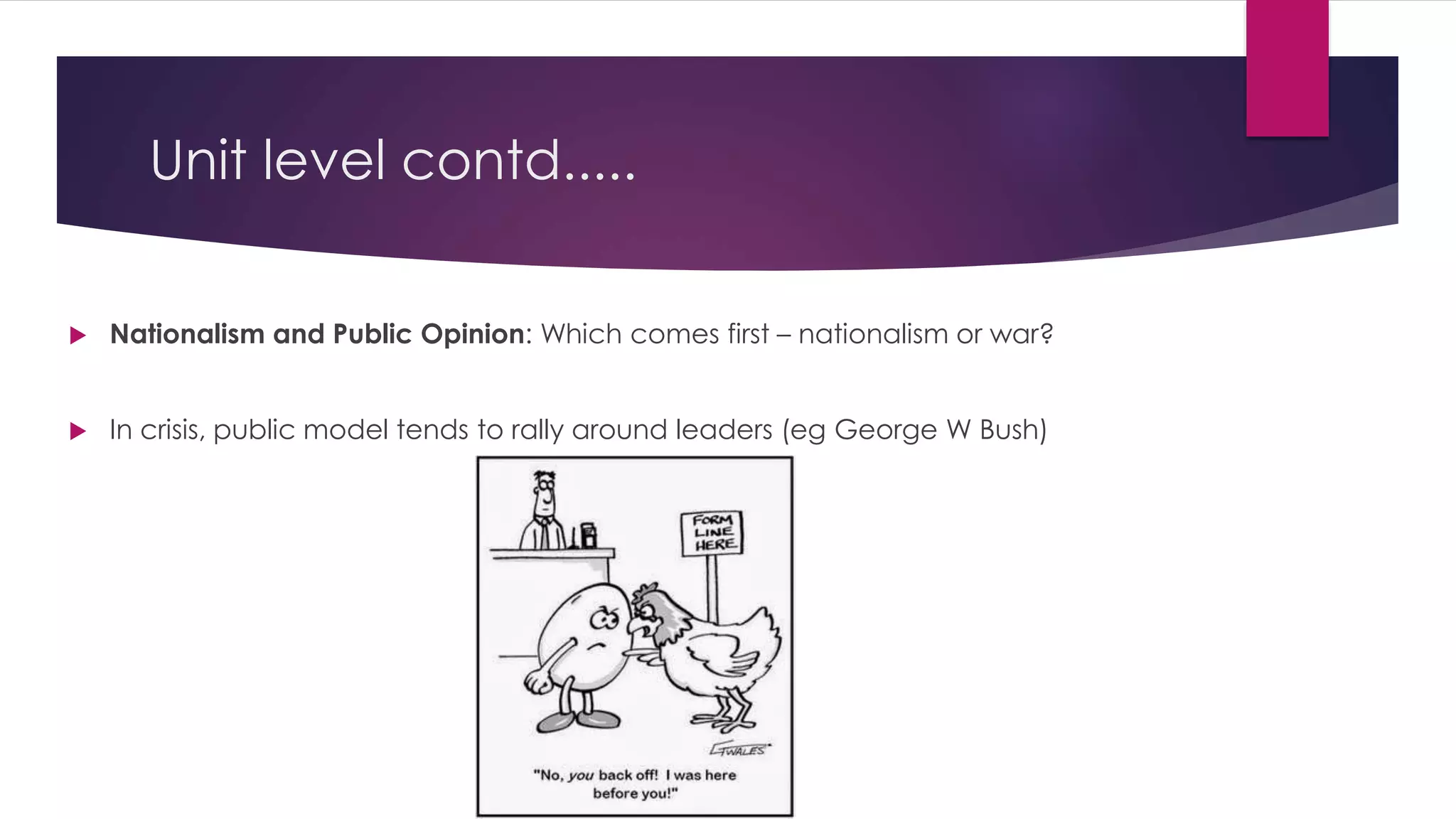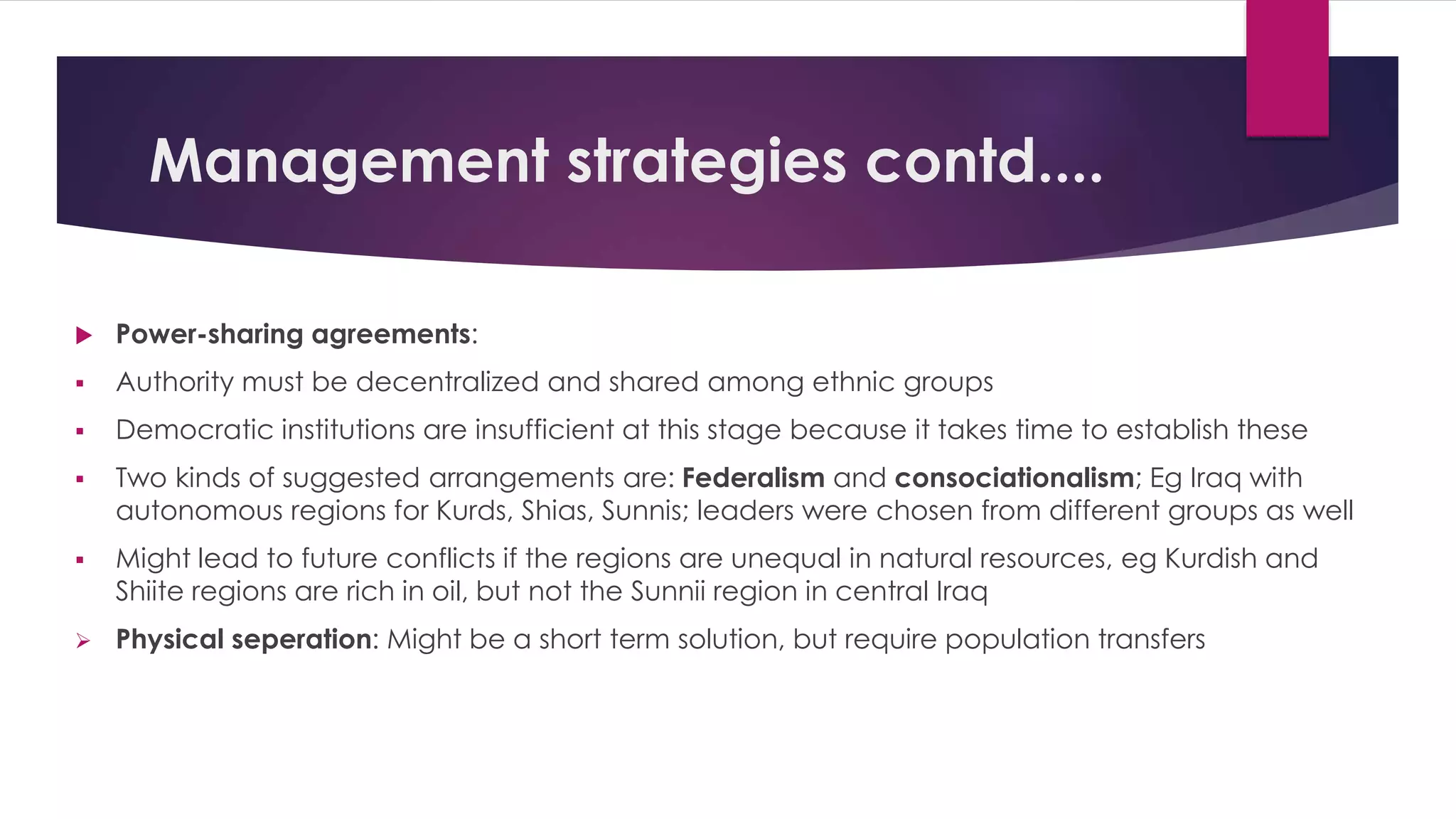The document discusses various causes of war at different levels of analysis, from the individual to the international system level. At the individual level, human nature and psychology are examined, including innate aggression and the decision-making processes of leaders. At the unit level, factors like domestic politics, nationalism, regime type and economic systems are considered. The system level focuses on the distribution of power between states and the security dilemma. Causes of interstate and intrastate wars are also analyzed. Strategies for managing intrastate wars include power-sharing agreements, federalism, consociationalism and foreign intervention.

